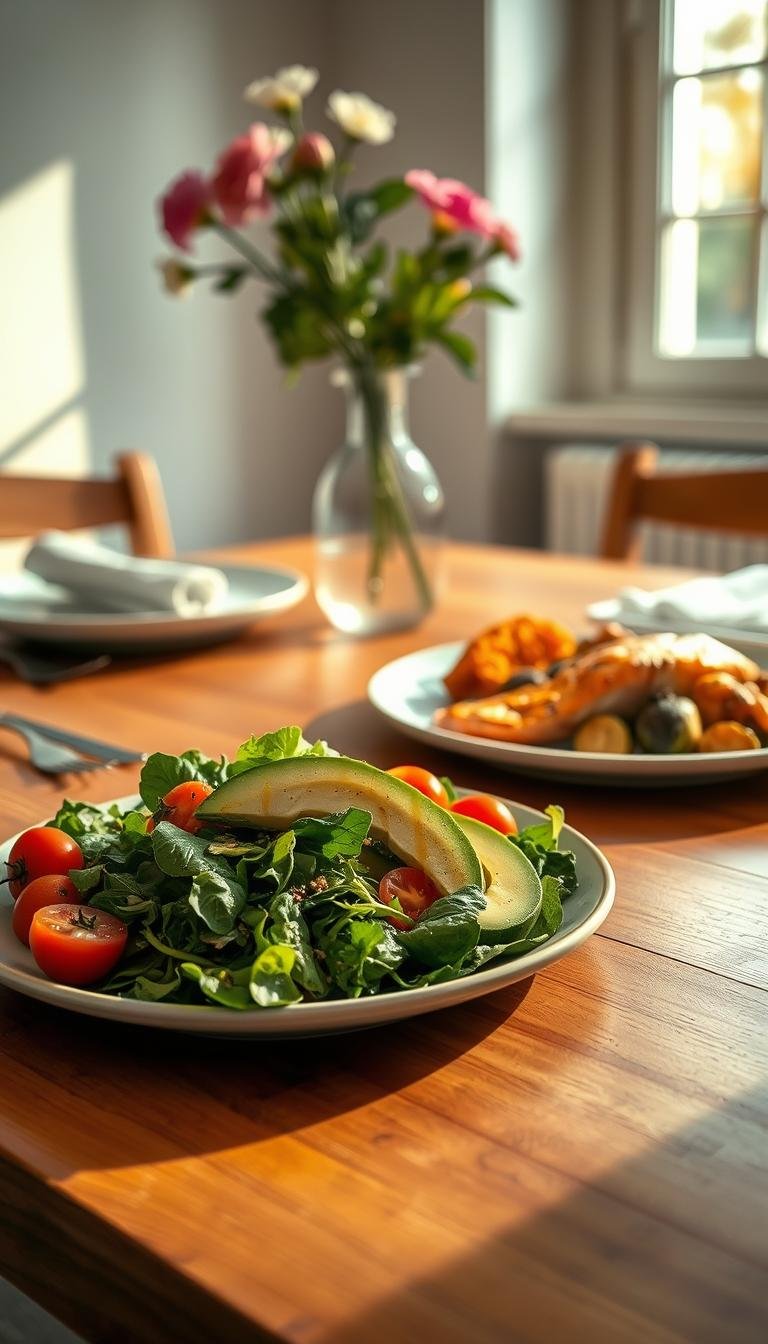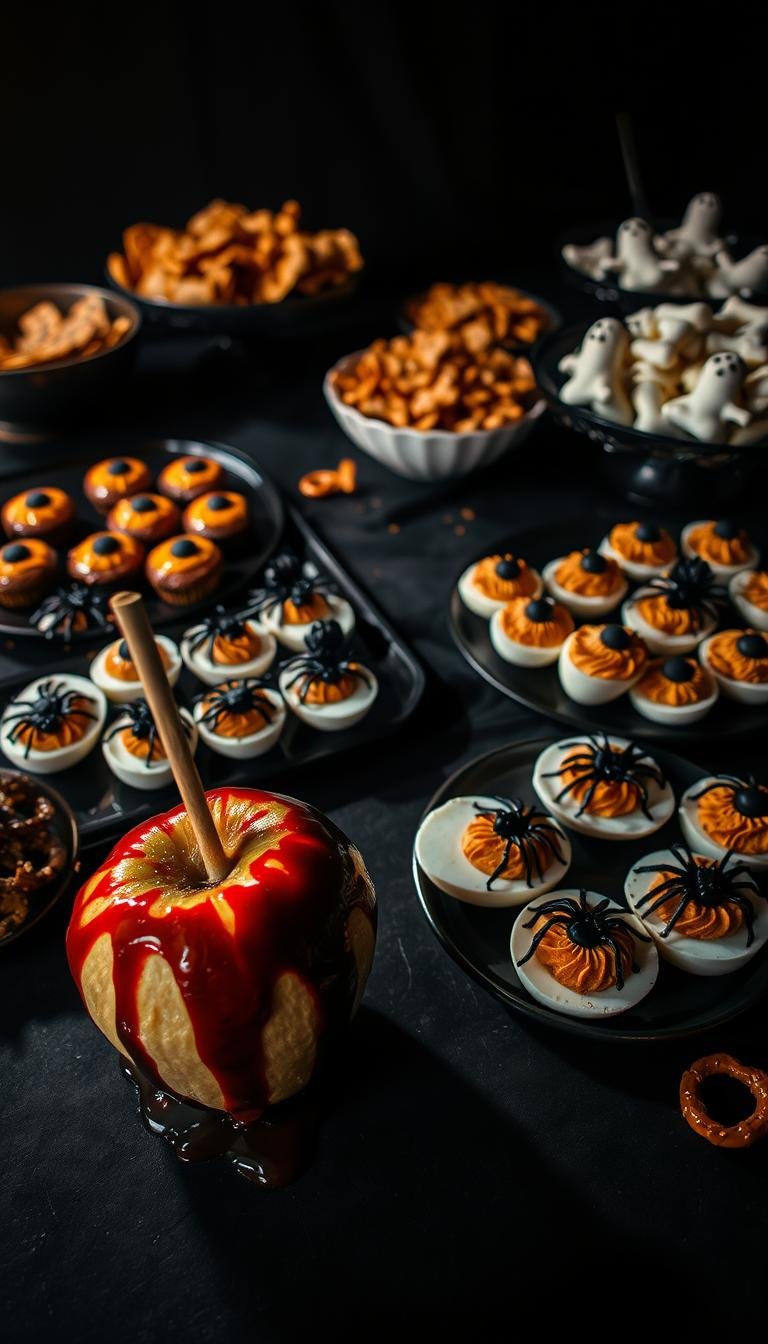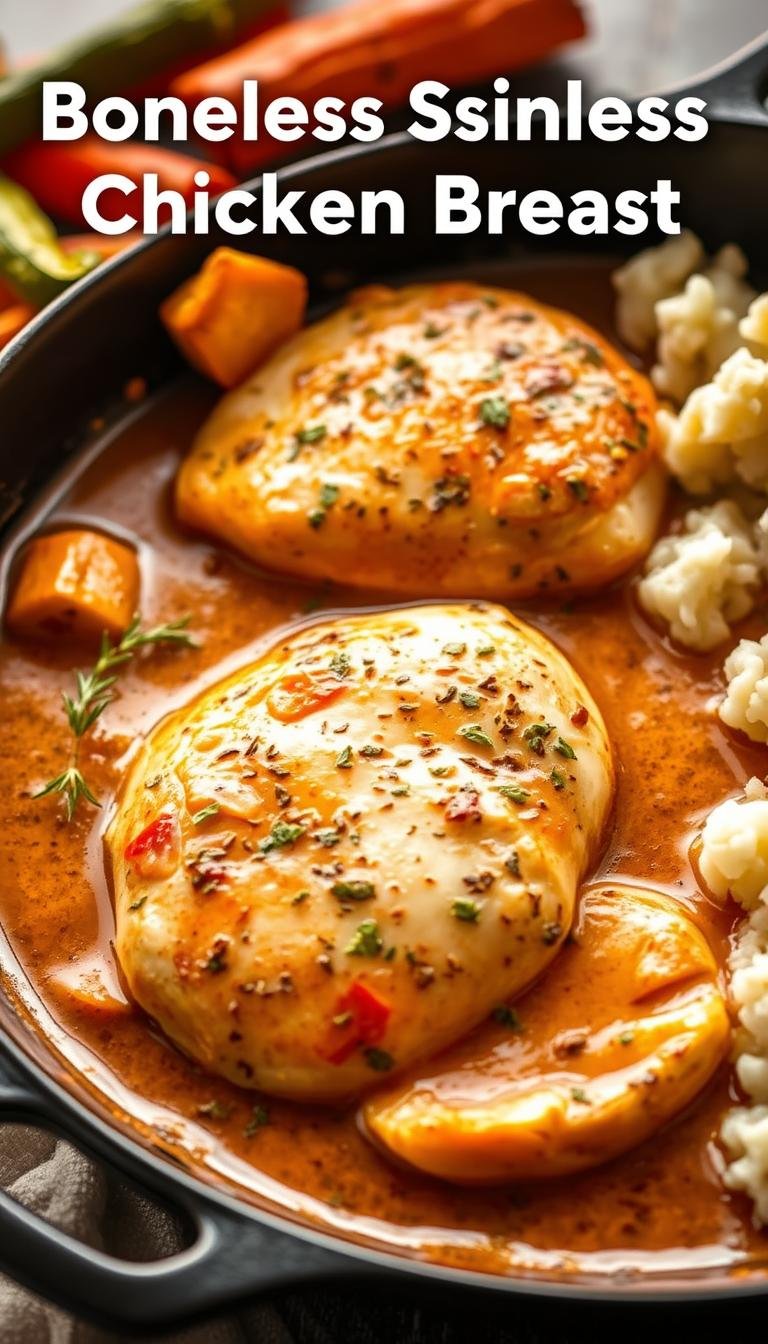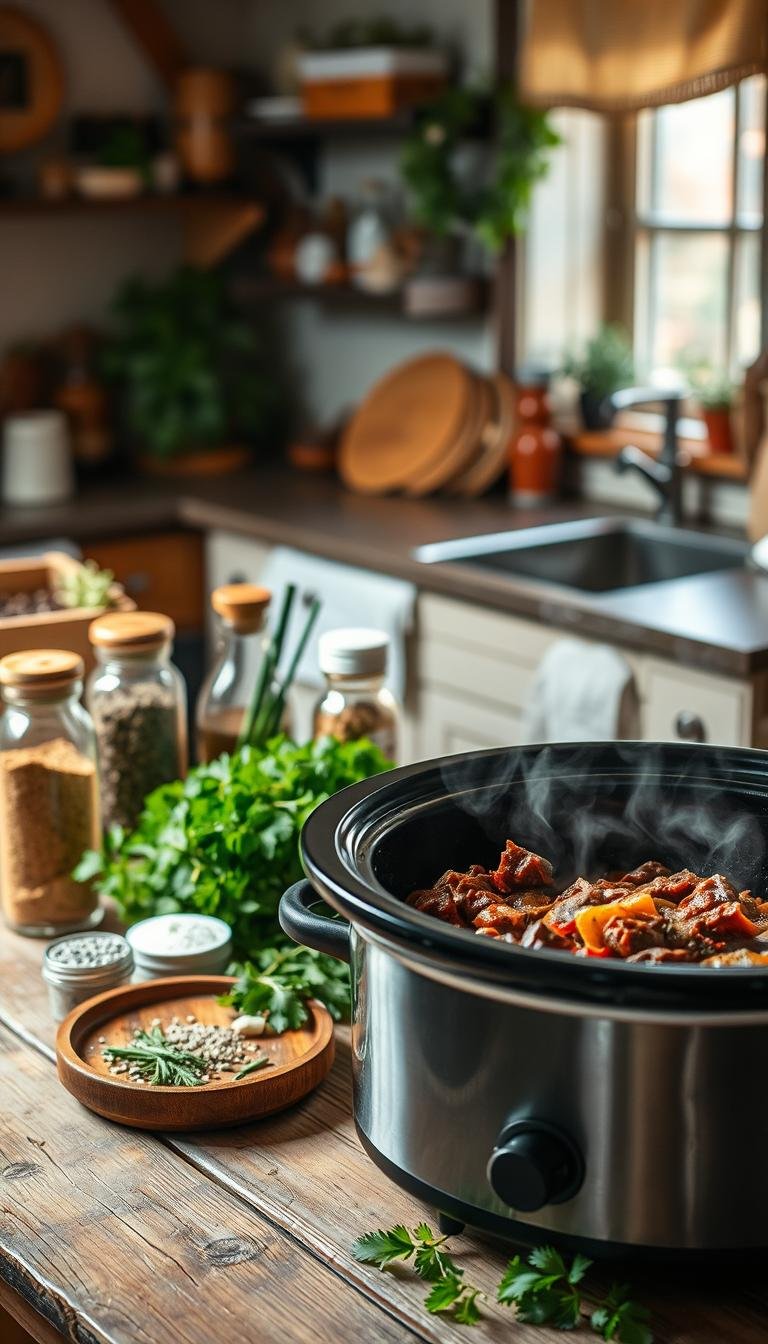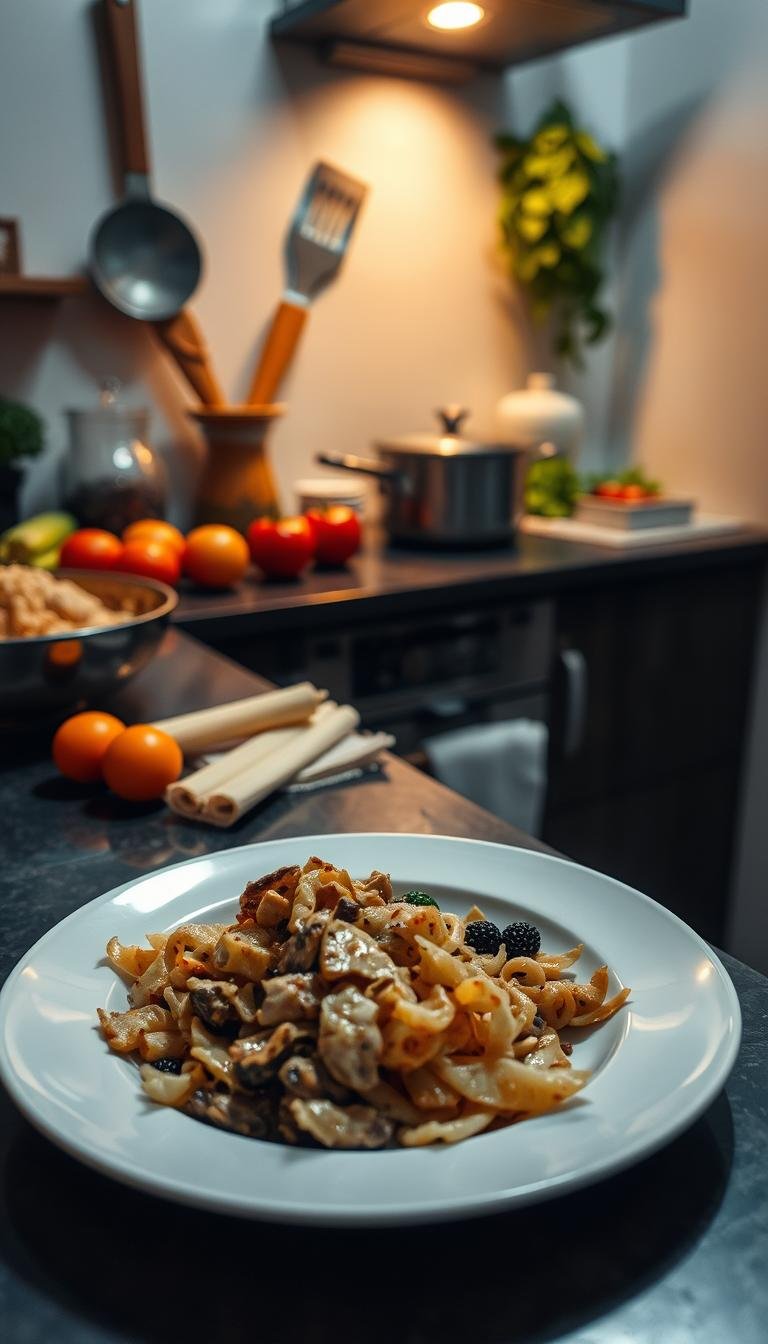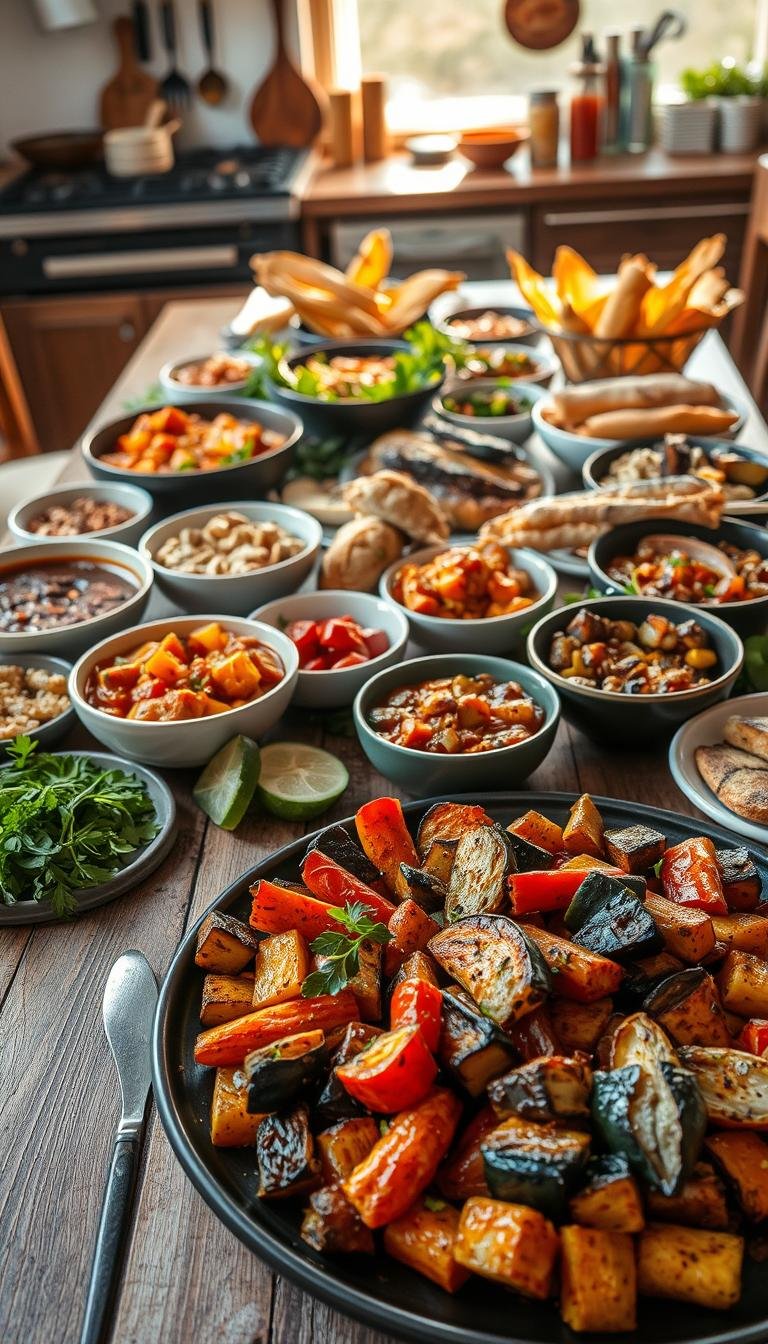Healthy Clean Eating Dinner Ideas for a Nutritious Meal
Fact: Americans toss nearly 30% of food by waste each week, yet a one-hour kitchen plan can cut shopping stress and improve meals fast.
Clean eating does not have to be complicated. Use whole-food recipes with everyday ingredients. Aim for no more than one hour total in the kitchen per day.
Start simple: overnight oats with berries and a splash of milk for breakfast, a quinoa meal-prep bowl for lunch, and a one-pan chicken plate for the evening. Consistency beats perfection.
Family-friendly tweaks let you cook once and serve many. Prep a lemon-olive oil dressing, roast sweet potatoes, or cook quinoa ahead so weeknight meals come together in minutes.
Key Takeaways
- Focus on whole-food recipes that fit a busy lifestyle.
- One hour a day in the kitchen can change your week of meals.
- Prep staples—quinoa, dressings, chopped veg—to speed dinner time.
- Recreate family favorites to avoid cooking multiple meals.
- Small, repeatable steps beat perfection and reduce processed items.
What Clean Eating Means Today: Minimally Processed, Balanced, and Practical
Adopt a practical approach that centers on nutrient-dense, minimally processed foods. This way frames clean eating as a flexible lifestyle, not a strict diet that bans favorites.
Focus on whole grains, fruits, lean protein, vegetables, legumes, nuts, and healthy fats. These minimally processed choices boost nutrients and keep you full without fuss.
- Balance each plate: protein + smart carbs + fats + lots of vegetables for satiety and performance.
- Start by adding whole foods rather than removing items. Your cart will shift naturally away from processed foods.
- Use the 80/20 way: aim to be “clean” most of the day and enjoy the rest without guilt.
| Plate Component | Example | Portion | Benefit |
|---|---|---|---|
| Protein | Chicken, beans, or Greek yogurt | 3–4 oz or ¾ cup | Muscle support and satiety |
| Smart Carbs | Quinoa, sweet potato, or whole grain | ½–1 cup | Steady energy |
| Vegetables & Fats | Leafy greens, olive oil, avocado | 1–2 cups + 1 tbsp fat | Micronutrients & flavor |
Keep recipes simple—sheet-pan meals, stir-fries, and one-pan plates save time and fit a weekly meal plan. A short list of reliable recipes and a basic shopping plan make lunch and dinner prep faster each day.
Practical tip: aim for consistency over perfection. Small, repeatable steps make this way sustainable long term.
Smart Picks: dinner ideas healthy clean eating
Pick recipes that combine bold seasoning and simple technique for big flavor in less time.
Pan-Seared Chicken Thighs with Sweet Potato and Asparagus (one-pan, 40 minutes)
Season two boneless, skinless chicken thighs with paprika, oregano, chili powder, sea salt, and pepper. Slice one small sweet potato into ½-inch rounds. Sear both in avocado oil 5 minutes per side, add asparagus and a splash of water, then cover and steam on low about 20 minutes until tender. Total time: ~40 minutes.
Buffalo Chicken Stuffed Sweet Potatoes
Bake or microwave a sweet potato, top with smoky Buffalo chicken and a drizzle of homemade ranch for a spicy, creamy finish.
- Chicken & Sausage Jambalaya: lightened with turkey sausage and cauliflower rice; great for lunch leftovers.
- Mediterranean Farro Bowl: marinated chicken, feta, veggies, and tzatziki for balanced protein and grain.
- Other picks: slow-cooker beef & broccoli, cheesy beef taco skillet over lettuce with avocado, pizza chicken bake, and a red chicken chili topped with avocado and cilantro.
| Recipe | Main Protein | Prep Time | Highlight |
|---|---|---|---|
| One-Pan Chicken Thighs | Chicken thighs | 40 minutes | Sear + steam with sweet potato & asparagus |
| Buffalo Stuffed Potato | Shredded chicken | 30 minutes | Spicy topping with homemade ranch |
| Mediterranean Farro Bowl | Chicken breast | 25 minutes | Feta, tzatziki, crisp veggies |
Clean Dinners in Under 30 Minutes
You can plate bright, satisfying meals in under half an hour. These options focus on fast technique, bold flavor, and swap-friendly proteins so you can keep a steady rhythm through the week.
Mongolian-Style Beef with Extra Veggies
Mongolian beef builds flavor in stages: sear thin beef, sauté garlic and ginger, then add a quick soy-ginger sauce. Toss in broccoli, bell pepper, or snap peas for color and crunch.
With a warm carb—rice, farro, or noodles—this recipe finishes in about 30 minutes and delivers bold taste without long prep.
Five-Minute Lettuce-Wrap Tacos with Steak or Turkey
Repurpose pre-cooked steak or ground turkey for near-instant assembly. Spoon protein into butter lettuce, add salsa or a quick slaw, and fold—each wrap takes roughly a minute to make.
This approach makes weekday meals fast and modular. Prep extra protein once and assemble for multiple nights.
Sriracha Honey Sesame Chicken with Roasted Broccoli
For a spicy-sweet balance, simmer a sriracha-honey sauce and glaze quick-cook chicken pieces. Roast broccoli on a sheet pan while the sauce reduces to save time.
Serve with brown rice for a rounded plate that keeps flavors familiar and lighter. Swap chicken cuts or double the broccoli as needed.
| Recipe | Main Protein | Total Time | Highlight |
|---|---|---|---|
| Mongolian-Style Beef | Beef (thin slices) | 30 minutes | Garlic-ginger sauce + extra veggies |
| Lettuce-Wrap Tacos | Pre-cooked steak or turkey | 5 minutes | Minute-per-wrap assembly, very quick |
| Sriracha Honey Sesame | Chicken | 20 minutes | Spicy-sweet glaze with roasted broccoli |
Family- and Kid-Approved Clean Eating Meals
Getting kids on board starts with recreating what they already love, using cleaner ingredients. This keeps the table calm and makes the lifestyle easier to follow.
Baked Chicken Nuggets (Grain-Free, Chick-fil-A Inspired)
Grain-free baked chicken nuggets mimic the familiar flavor kids crave while using a cleaner coating. Bake bite-sized pieces until golden and serve with yogurt-based dip.
These nuggets are a wholesome stand-in for drive-thru fare and work as a protein-packed meal or a next-day lunch.
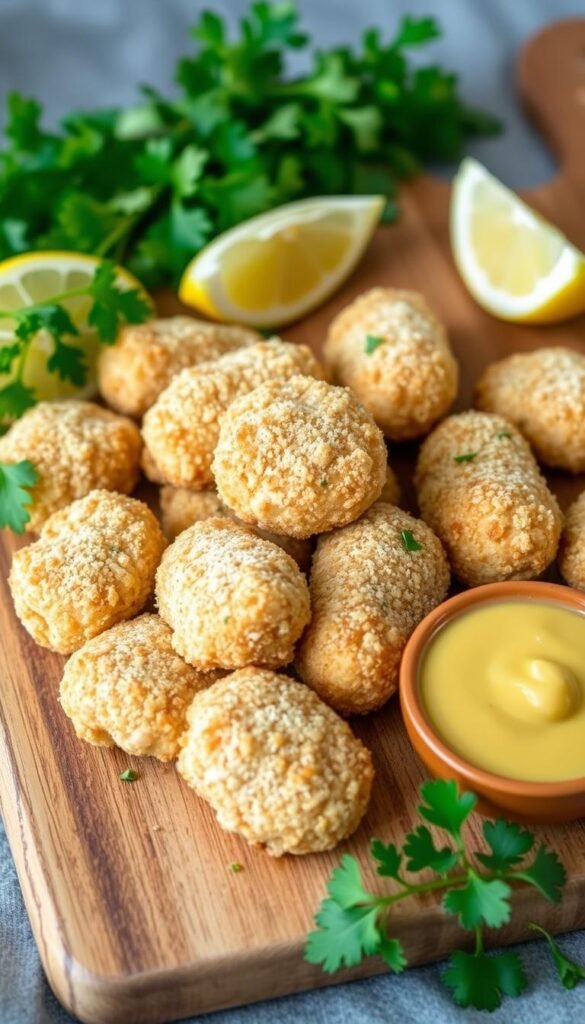
Cheesy Taco Skillet Night with Veggie Sides
Make a one-skillet taco mash with seasoned beef, peppers, and cheese. Serve over lettuce or tortillas so each person builds their plate.
Easy sides—roasted broccoli, carrot “fries,” or sweet potato wedges—add color and crunch without extra fuss.
- Serve grain-free nuggets for familiar flavor and a cleaner ingredient list.
- Turn taco night into a single-skillet meal to avoid cooking twice.
- Use leftovers for lunch the next day to save time and stay on track.
| Family Pick | Main Protein | Quick Side | Why Kids Like It |
|---|---|---|---|
| Baked Nuggets | Chicken | Carrot fries | Familiar shape and flavor |
| Cheesy Taco Skillet | Beef | Roasted broccoli | Build-your-own plates |
| Sweet Potato Wedges | — | Simple roasted potatoes | Heartier side that still fits the plan |
Budget-Friendly Clean Eating: Seasonal, Freezer, and Smart Organic Swaps
A simple plan that leans on the freezer aisle and seasonal produce keeps the week affordable.
Buy in season to take advantage of sales and peak flavor. Summer brings berries, peaches, squash, zucchini, and tomatoes. Winter yields cauliflower, Brussels sprouts, broccoli, kale, and root vegetables.
Use frozen fruits and veggies when fresh prices spike. Frozen options often cost less, last longer, and cut waste while saving time on prep.
- Select organics selectively using a Dirty Dozen / Clean 15 list so you spend more where it matters.
- Build a flexible meal plan around weekly sales and seasonal items to keep recipes varied and affordable.
- Mix fresh and frozen in one plate—for example, fresh greens with frozen berries—to balance cost and quality.
| Strategy | Why it helps | Example |
|---|---|---|
| Buy in season | Lower cost, better taste | Summer tomatoes; winter root veg |
| Use freezer aisle | Less waste, longer shelf life | Frozen berries, peas, spinach |
| Selective organics | Target pesticide exposure | Follow Dirty Dozen / Clean 15 |
Meal Prep and Weekly Eating Meal Plan Made Easy
Plan two short prep sessions each week to lock in quick meals and remove evening guesswork. A brief block of focused time makes a big difference for breakfast, lunch, and dinner.
Sample Two-Night Prep
Marinate chicken, roast sweet potatoes, chop veggies
One night, marinate your chicken, roast sweet potatoes, and chop a mix of vegetables. This step saves time on active cook nights.
Store-and-Serve Staples
Use your Instant Pot to cook quinoa and hard-boiled eggs together: 1 cup quinoa + 1 cup water, place a trivet and two fridge-cold eggs, 1 minute high pressure with full natural release. Ice-bath eggs for easy peeling.
“A little prep up front turns busy evenings into simple assembly.”
- Shake a lemon-olive oil dressing (½ lemon juice + 1 Tbsp olive oil, salt, pepper) in a jar.
- Make overnight oats with milk the night before for a one-minute breakfast assembly.
- Pack lunches by dividing quinoa, chopped veggies, and an egg into containers; add dressing at the table.
| Task | What to make | Where to store |
|---|---|---|
| Night 1 | Marinated chicken, roasted sweet potato, chopped veg | Fridge trays |
| Night 2 | Quinoa + hard-boiled eggs (Instant Pot) | Clear containers in fridge |
| Mornings | Overnight oats (milk) & toppings | Mason jars in fridge |
Keep staples visible in the fridge so your meal prep supports automatic choices. Track the week with a simple plan: note which nights you cook versus reheat. This structure keeps your eating steady and helps you follow a practical clean eating meal without stress.
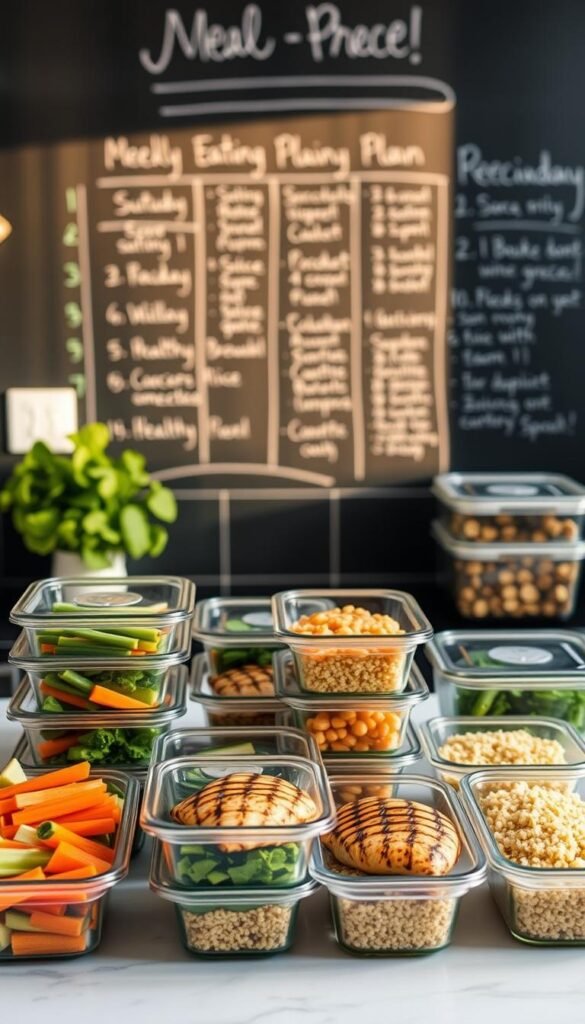
Your Clean Eating Pantry: Proteins, Veggies, and Whole Grains to Keep on Hand
Keep a short roster of versatile staples so assembling meals feels automatic. Stocking a few reliable items saves time and keeps plates balanced from breakfast through dinner.
Lean Proteins and Dairy Options
Protein sources like chicken, turkey, and eggs are the backbone of quick plates.
Greek yogurt and a splash of milk work for fast breakfasts or creamy sauces.
Produce, Grains, and Healthy Fats
Rotate workhorse vegetables such as sweet potato and broccoli so roasting or steaming is second nature.
Store grains like quinoa and farro for fast bases that pair with any protein and sauce.
- Keep olive oil, nuts, seeds, and avocado for texture and satisfying fats.
- Add small extras—feta or tzatziki—to change flavor profiles without extra work.
- Build a weekly grocery list that tops up these staples and seasonal foods.
“Stocking staples cuts nightly stress and makes better food the easy choice.”
Organize the fridge so cooked grains, prepped vegetables, and proteins are visible and ready to grab.
With this short list you can toss a salad, build a grain bowl, or roast a tray of chicken in minutes.
Sidekicks and Extras: Veggie Sides and Simple Dressings to Elevate Any Meal
A handful of simple sides and a bright dressing lift every main without much fuss. These small plates add texture, flavor, and variety while saving prep time.
Aromatic Coconut Greens
Add aromatic coconut greens to your make-ahead list. Sauté garlic, ginger, and spices, then finish with a splash of coconut milk so the flavors cling to hearty vegetables. They reheat well and work as a reliable side for chicken or grain bowls.
50/50 Cauliflower Mashed Potatoes
Mix cauliflower with potato for a creamy 50/50 mash that boosts vegetables per bite while keeping comfort intact. This recipe blends quickly and stores for easy reheats in just a few minutes.
- Keep a jar of lemon-olive oil dressing ready—one quick drizzle transforms salads, veggies, or a grain bowl.
- Top red chicken chili with avocado and cilantro for cool richness and fresh lift.
- Roast sweet potato wedges or cubes as a versatile side that pairs with almost any protein and stores well.
“Mix and match these recipes through the week to keep plates balanced and interesting without extra fuss.”
Conclusion
Pick three go-to recipes and weave them into a simple calendar to free up mental space.
Consistency over perfection is the practical way forward. Map those top recipes to a weekly plan so breakfast, lunch, and a clean eating meal fall into place without stress.
Use light meal prep and short sessions to lock in staples: a jarred dressing, pre-cooked grains, and a roasted potato or avocado side. Rely on under-30-minute plates and family favorites reworked with minimally processed ingredients to keep everyone on board.
Buy seasonal produce and keep freezer staples to stretch variety and budget. Over time, these small routines become a lifestyle that supports a healthier life and makes each recipe easier the next week.
